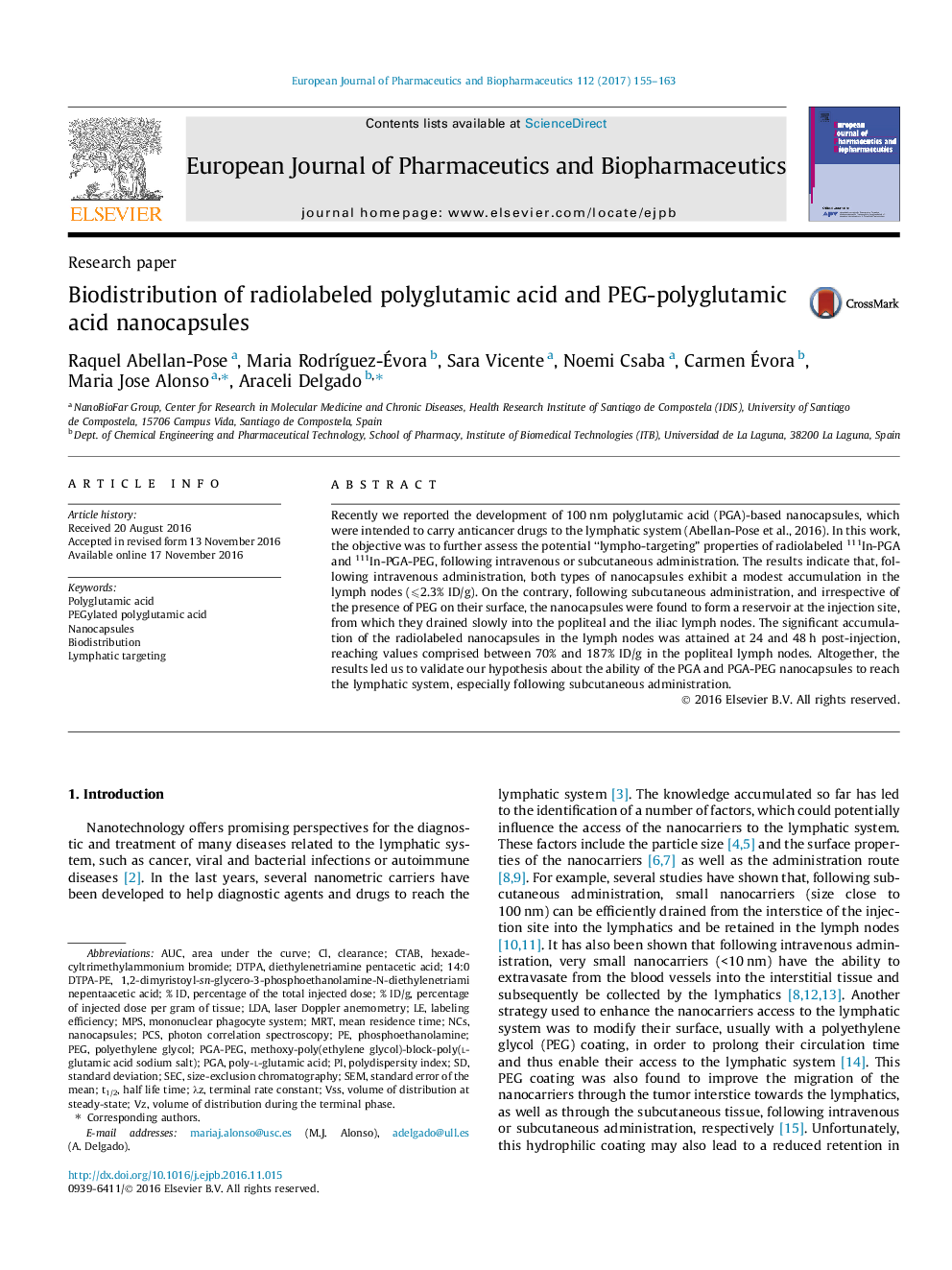| Article ID | Journal | Published Year | Pages | File Type |
|---|---|---|---|---|
| 5521638 | European Journal of Pharmaceutics and Biopharmaceutics | 2017 | 9 Pages |
Recently we reported the development of 100 nm polyglutamic acid (PGA)-based nanocapsules, which were intended to carry anticancer drugs to the lymphatic system (Abellan-Pose et al., 2016). In this work, the objective was to further assess the potential “lympho-targeting” properties of radiolabeled 111In-PGA and 111In-PGA-PEG, following intravenous or subcutaneous administration. The results indicate that, following intravenous administration, both types of nanocapsules exhibit a modest accumulation in the lymph nodes (⩽2.3% ID/g). On the contrary, following subcutaneous administration, and irrespective of the presence of PEG on their surface, the nanocapsules were found to form a reservoir at the injection site, from which they drained slowly into the popliteal and the iliac lymph nodes. The significant accumulation of the radiolabeled nanocapsules in the lymph nodes was attained at 24 and 48 h post-injection, reaching values comprised between 70% and 187% ID/g in the popliteal lymph nodes. Altogether, the results led us to validate our hypothesis about the ability of the PGA and PGA-PEG nanocapsules to reach the lymphatic system, especially following subcutaneous administration.
Graphical abstractDownload high-res image (177KB)Download full-size image
